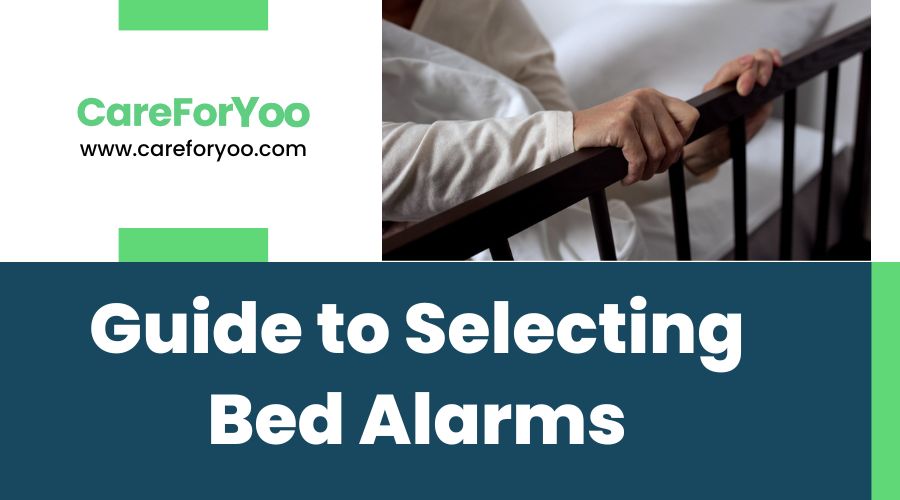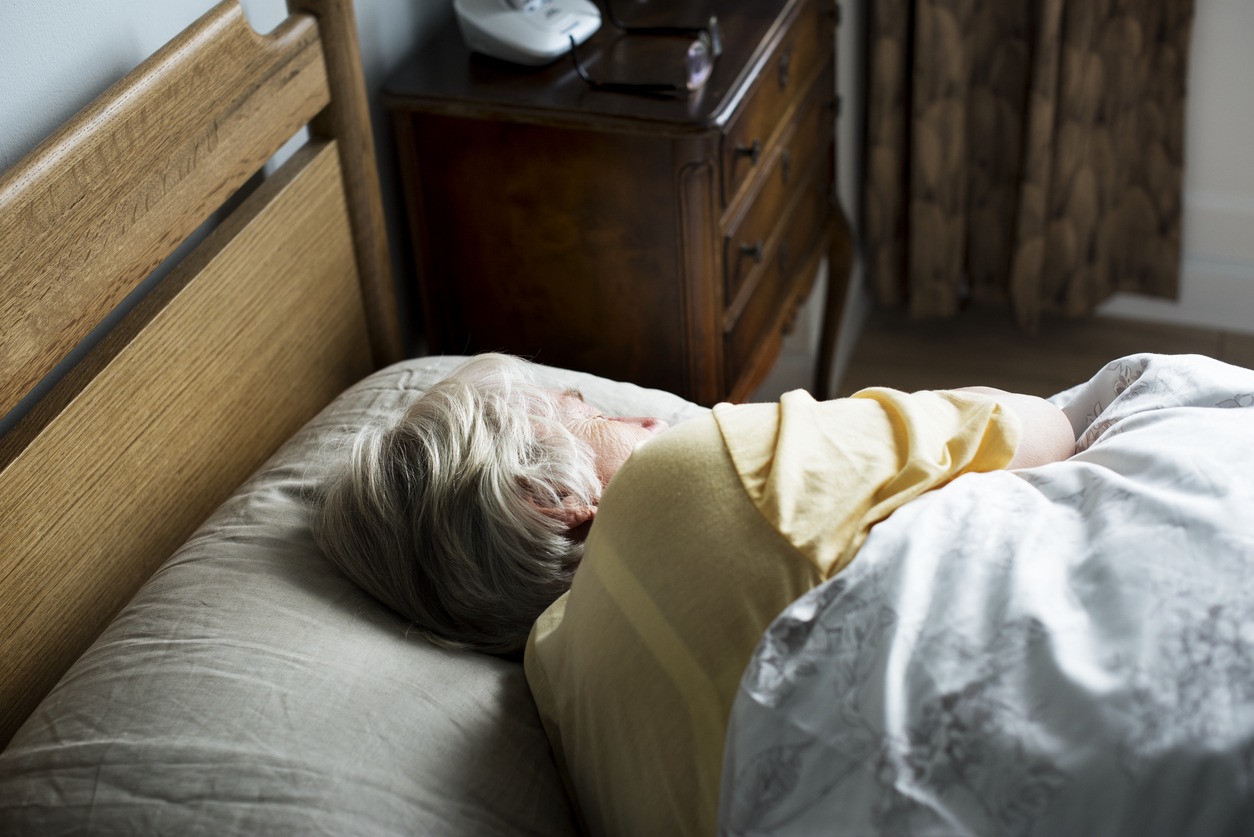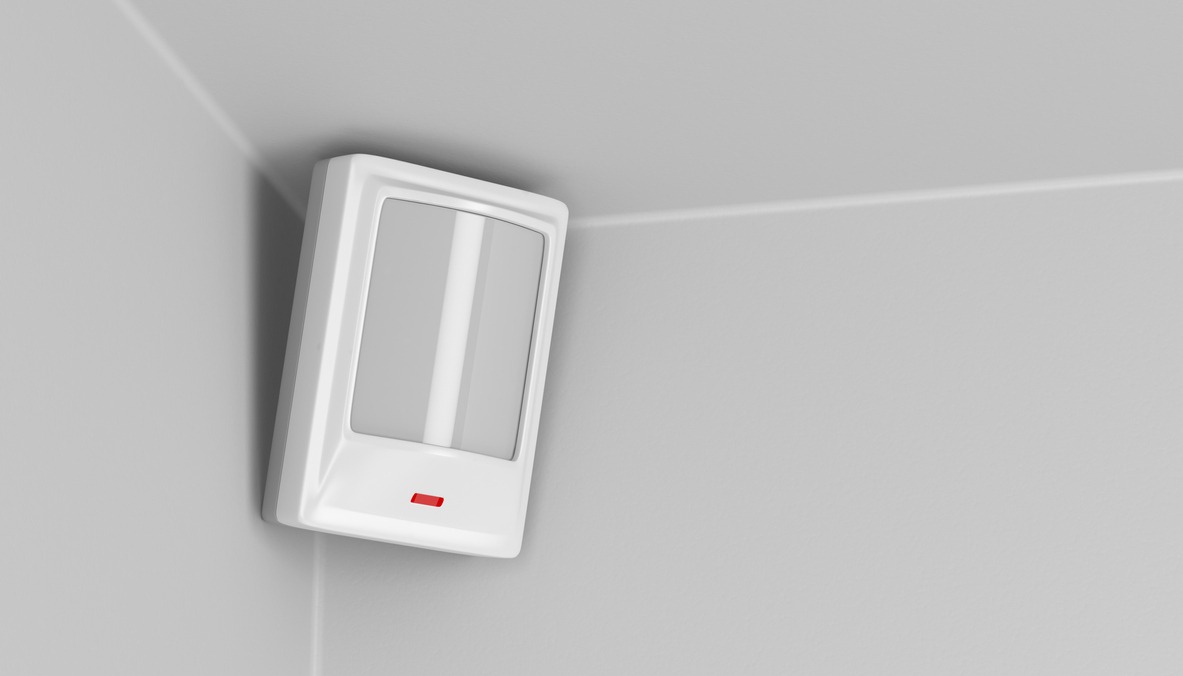Sleeping is one of the most important activities that we need to do every day, as it allows our body to rest and heal after a stressful or taxing day doing chores, accomplishing work-related tasks in the office, or studying in school. However, many elderly or senior patients with Alzheimer’s and dementia tend not to get enough sleep.
According to the National Institute on Aging, adults need to have seven to nine hours of sleep a night, but older people would often sleep early at night while also getting up very early in the morning, and this routine can often cause a lack of sleep. Numerous reasons are put out by experts as to why seniors don’t get enough sleep, and these reasons include being easily irritated, feeling too much pain in certain areas of the body, or medicines that can keep the elderly awake. [1]
During situations where seniors couldn’t sleep, they can often get up from bed and wander around the hours on their own. In some instances, they would even be able to go outside and wander in different places until they get lost. Leaving seniors unsupervised after they wake up can be very dangerous, as accidents and injuries may happen during that time.
Fortunately, there is a device called a bed alarm that can alert the caregiver if the senior or patient with special needs has suddenly gotten out of bed. What exactly is a bed alarm? And how should we pick the best bed alarms to use? To know the answers to these two questions, here is a guide to selecting bed alarms.
What is a Bed Alarm?
A bed alarm is an alarm system that is specifically installed on the bed frame, the mattress, or near the bed of the senior or patient with Alzheimer’s, dementia, and other illnesses or disorders. There are different ways to trigger the alarm of a bed alarm system, which include sensing if the patient has risen from bed, monitoring movement in the patient’s room, or simply letting go of the magnetic part of a pull string or cord. [2] We will talk more about these different methods of triggering the bed alarm later as we discuss the different types of bed alarms.
It is important to note that bed alarms are only used for alerting the caregiver if the patient has gotten out of bed, so they aren’t necessarily capable of preventing the patient from wandering around the room or in other areas of the house. Once the alarm is triggered, it is already the responsibility of the caregiver to respond to the alarm and check on his or her patient.
There are bed alarms that have an all-in-one system, which means that the sensor and the part that creates the alarm sound are built into just one device. However, there are also bed alarms that have separate pieces for the sensor and the device that produces the alert sound (usually called the pager). While the all-in-one bed alarms are more affordable because everything you need in a bed alarm is already on just one device, it isn’t suitable in all situations since the alarm sound can only be heard in the patient’s bedroom, and the alarm could even startle the senior or patient.
So, the best bed alarms are the ones that have separate parts for the sensor and the pager. The sensor can be installed in the patient’s bedroom, while the pager can be installed in the caregiver’s room or in any other area of the house or facility where the caregiver can easily hear the alarm sound.
What are the Different Types of Bed Alarms?
Bed alarms come in a variety of forms, and these types of bed alarms are different from each other based on their methods of triggering the alarm. Here are the things you need to know about the different types of bed alarms so that you will have an idea of which one is suitable for your patient or elderly loved one.
Bed Sensor Pads
One of the most common bed alarms today is the bed sensor pad, which features a soft pad that is placed underneath the bed sheet to keep it hidden from the senior or patient. The soft pad has a pressure sensor that detects if the pressure applied to the pad begins to decrease.
When the patient is already sleeping on the bed, the caregiver can activate the bed alarm so that the sensor memorizes the pressure applied by the patient’s body weight. Then, when the pressure is lifted due to the patient getting up and out of bed, the sensor will trigger the alarm.
The downside to bed sensor pads is that they are usually prone to failing, as they won’t trigger the alarm sometimes, even if the patient has already gotten out of bed. However, there are some improved sensor pads that have better features to ensure that the alarm will always trigger when it needs to.
Check these two bed sensors pads out for you to have an idea of what they look like and how they operate:
- Lunderg Early Alert Bed Alarm System – this bed alarm system is different from other bed sensor pads because it has a pre-alert smart technology that detects if the senior or patient is beginning to stand up as opposed to detecting if the patient has already gotten out of bed.
- Secure Safety Solutions 14BSET-5 Bed Alarm – this bed alarm has an adjustable volume that goes from 80 dB to 120 dB. Moreover, the alarm also has two alert tones, with one being the regular alarm sound, while the other is the low battery indicator that will tell you when it is time to change batteries.
Motion Sensor
The motion sensor is the type of bed alarm that triggers the alarm sound whenever it senses movement in the patient’s bedroom. The sensor is able to detect movements because of infrared waves, which monitor any change in temperature within the area or room. If there is a sudden change of temperature in a particular section of the bedroom, which is most likely caused by the body heat of the senior or patient, then the sensor will trigger the alarm. The motion sensor is typically instead on the top corner of a wall near the ceiling so that it will be able to cover and monitor all areas of a small room.
There are also motion sensors that use microwaves instead of infrared waves, and for these sensors, the microwaves bounce off of objects, people, or pieces of furniture and back into the sensors. So, the microwave sensors can detect movement whenever the microwaves bounce off of a moving person or object in the room. The con of motion sensors is that they can be quite expensive compared to sensor pads.
Here are two motion sensor devices that you can check out:
- EverNary Wireless Caregiver Motion Sensor – this motion sensor is battery-operated, although it can be powered by a micro-USB cable even if the transmitter and receiver don’t have batteries. Aside from the alert sound, the motion sensor also has a LED light indicator that flashes whenever the alarm is triggered.
- Smart Caregiver TL-5102MP Motion Sensor and Pager – this popular motion sensor features a wireless pager that can be carried by the caregiver or installed on a wall. For the motion sensor, there is an optional adjustable mounting bracket so that you can adjust the position of the sensor.
Pull String Alarm
The pull string alarm is activated whenever the pull string or cord is pulled away from the actual alarm, and the piece that connects the alarm and the pull string is a small magnet. The other end of the pull string is usually attached to the clothing of the senior or patient with the use of an alligator clip.
Much like the motion, the pull string alarm isn’t really installed on the bed, but they still serve as bed alarms since the pull string can be attached to the patient while he or she is sleeping, and the alarm can then be installed on the bed frame or on the wall near or next to the bed. In addition to beds, the pull string alarm can also be used in chairs, sofas, wheelchairs, and other pieces of furniture where the senior or patient may sit.
Take a look at these two pull string alarms for reference:
- Sammons Preston Magnet Alarm – this pull string alarm has an adjustable cord that can be lengthened for up to 30 inches. Furthermore, the alarm also has a low battery indicator so that you wouldn’t have a hard time figuring out when it is time to replace the battery of the device.
- Secure Safety Solutions MAG-5 Magnet Pull Cord Alarm – this easy-to-operate pull string alarm features a larger magnet compared to most pull cord alarms, and this larger magnet ensures that there won’t be any false alarms that may occur due to the magnet accidentally falling off the alarm.
Tips for Buying Bed Alarms
The popularity of bed alarms is at an all-time high nowadays because of how effective they are in monitoring a sleeping patient with dementia, Alzheimer’s, or other special needs. Because of how popular bed alarms are today, there are already hundreds of them that can be bought in physical stores or online marketplaces. To help you have a better idea of what to choose, here are a few tips for buying bed alarms.
Consider Buying Battery-Powered Bed Alarms
Installing bed alarms is relatively easy, but it can sometimes be time-consuming when they have wires and cables that you have to place neatly on the bed frame or on the walls. If you want to avoid spending too much time setting up cables, you should consider buying battery-powered bed alarms. These battery-powered bed alarms typically don’t have cables, as they operate wirelessly. In addition, these bed alarms allow you to install them anywhere since they don’t need to be connected to an electrical outlet for them to work.
Find Bed Alarms with an Adjustable Volume
The next thing to consider is bed alarms with an adjustable volume. Bed alarms can sometimes be too loud, especially for apartments and small houses where there are neighbors that will most likely hear a loud alarm sound. So, for smaller homes and nursing facilities, caregivers should choose bed alarms that have an adjustable volume so that the loudness of the alarm can be customized.
Choose Bed Alarms that Use Common Batteries
While battery-powered bed alarms are regarded as some of the most convenient alarm devices out there, their level of convenience sometimes depends on the batteries they are using. If the bed alarms use batteries that are uncommon or rare in the market, then you will most likely have a difficult time finding replacement batteries. To prevent this dilemma from happening, you should choose bed alarms that utilize common batteries, like AA, AAA, and 9V batteries, so that you can easily replace them anytime.
And those are all the important details and information that may become useful once you actually try to find the best bed alarms on the market. Read or watch reviews online so that you can have a much easier and quicker experience in choosing the most suitable bed alarms for your needs and for your patient or elderly loved one.
References
[1] National Institute on Aging. (2020, November 3). A Good Night’s Sleep. National Institute on Aging (NIH). Retrieved January 12, 2023, from https://www.nia.nih.gov/health/good-nights-sleep
[2] Keystone Healthcare. Bed alarms and fall prevention in hospitals. Keystone Healthcare. Retrieved January 12, 2023, from https://keystonehealth.care/knowledge-centre/11650-bed-alarms-and-fall-prevention-in-hospitals






